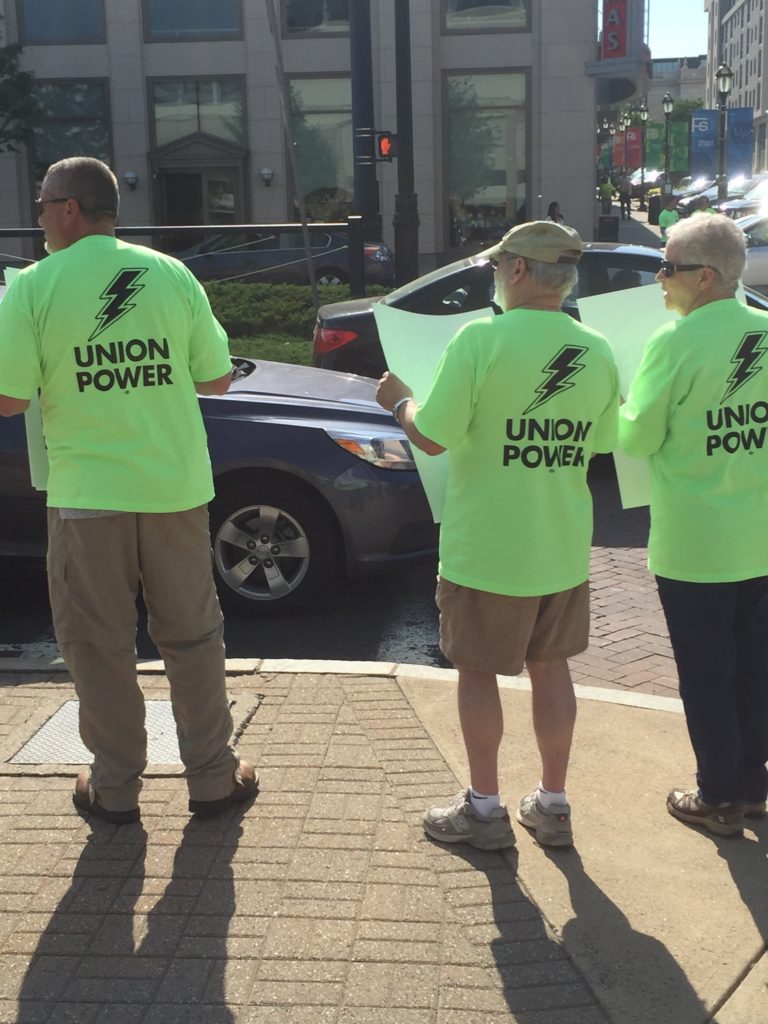More than 27,000 current state employees are receiving cash payouts or extra vacation time as the result of a lawsuit settlement with Connecticut’s state employee unions, which dates back to 2003.
According to the lawsuit, Gov. John Rowland unfairly unfairly targeted 2,300 union members when he laid off state employees to deal with a budget crisis. The State Employee Bargaining Agent Coalition sued for lost wages, lost promotions, and economic damages for its members, including lost personal time, loss in potential income for pension calculations and lost vacation time.
The vast majority of those laid off fifteen years ago returned to work for the state, but will be receiving settlement payments in the form of cash or extra vacation and personal time.

Those receiving payouts from the settlement include current and retired employees who were affected in any way by the layoffs, bringing the total number to more than 34,000 employees affected by varying degrees.
Although the settlement has been estimated to cost $100 million, Jaclyn M. Severance, spokeswoman for the Attorney General’s Office, says the true cost is unknown because “claims for economic damages are still being calculated.”
“This settlement is enormously complicated and challenging to administer,” Severance said in an email.
Severance says that of the 2,800 union members entitled to economic damages, 1,300 have been compensated so far, costing $22.1 million, or $17,000 per person. An additional $3.3 million in compensatory damages has already been paid.
According to a report to the General Assembly, 2,200 union members who will receive payments for economic damages due to being laid off or missing a promotion are still employed by the state, while only 550 are no longer state workers.
In total, the economic damages the state will pay in either cash or extra vacation time is estimated to cost $81.5 million over four years.
Punitive damages extend to a much larger group of employees. Of the 2,300 individuals laid off fifteen years ago, 1,840 are still employed by the state and will receive a $1,500 payment or 10 extra vacation days and 5 personal days. “This has the potential to increase costs for the state for agencies that must provide overtime coverage for those covering the additional time off,” the General Assembly report said.
The 460 employees who are no longer working for the state will receive cash payments, totaling $690,000.
The estimated 450 employees who were not laid off but moved to a lower paying position as a result of the layoffs will receive a $700 payment or vacation and personal time.
Finally, 34,500 members who were in some way, shape or form affected by the layoffs will receive $100 or 1.25 personal days, including 27,600 current employees, amounting to more than half the state workforce, for a total cost of $690,000.
But not all of the settlement will go to employees. The state has already paid $10.1 million for SEBAC’s legal costs, including $250,000 to the law firm of SEBAC’s chief negotiator, Dan Livingston.
The legal fees Connecticut has to pay will amount to 17.5 percent of the settlement.
In addition, a payment of $10,000 was made to each individual bargaining unit. The bargaining units – not just the employees – were also named as plaintiffs in the suit. This has resulted an additional $200,000 paid directly to unions.
Connecticut also has to pay 5 percent interest from the date of loss in 2003. Due to the complicated nature of calculating the damages and the large number of people involved, a number of payments have been delayed.
“This settlement is perhaps the most resource-intensive single matter pending in our office,” Severance said.
A federal appeals court ruled against the state in 2015, prompting the legislature to settle the suit rather than risk going to trial.
Severance says if the state had gone to trial the potential exposure could have topped $200 million, which would have been due 30 days after the judgement, and could have included a 33 percent payment for legal fees allowable under U.S. code.
The settlement has already added to Connecticut’s budget problems, adding $18 million to the state’s deficit in 2017.
SEBAC threatened another lawsuit during the 2017 budget negotiations if the legislature made changes to state employee benefits after 2027.


Vinny
September 17, 2020 @ 9:41 pm
February will be 3 years since I was contacted by the attorneys hired by the Union and still not settled! Very sad when you call once a month and get no call backs!
Vinny
October 27, 2021 @ 1:05 pm
another year gone by and still not settlement!!!!!!!!